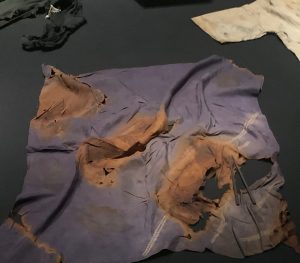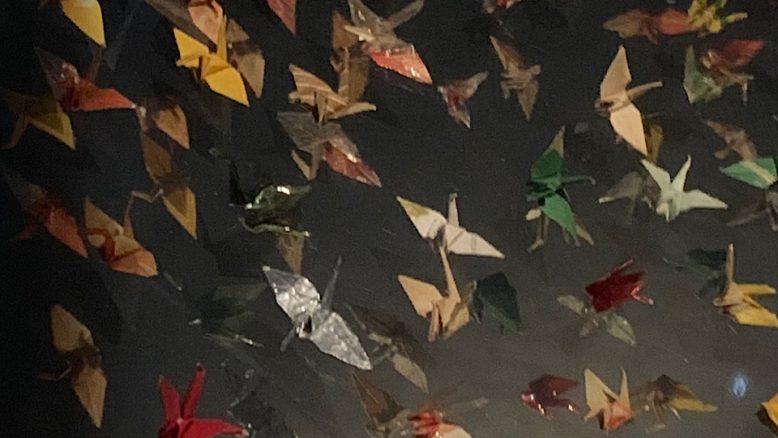Often conversations between friends can be considered confidential — sometimes labeled as “under the dome” with the implicit understanding that the topic won’t be discussed elsewhere. There was a moment when we took the tram from the port in Hiroshima to the Bomb Site when speech stopped, when time stopped, when a fiery reality spread amongst us travelers. As we walked toward ground zero (ok six hundred meters below) and the local resident began to explain that on August 6, 1945 at exactly 8:15 in the morning the first A Bomb shattered the silence and silenced over 140,000 people. Leveled an entire city core and burned the flesh on survivors. All this was beyond awful and in the context of our times the words in a letter from Albert Einstein penned to President Rosevelt on August 2nd, 1939 ring more than true: “ it may be possible to set up nuclear chain reactions…. By which vast amounts of power…. Could be achieved in the near future…. This new phenomenon would lead to the construction of bombs… a single bomb of this type might destroy a whole port together with the surrounding territory… I understand that Germany has actually stopped the sale of uranium from Czechoslovakia…. The son of the German under-secretary of state is attached to the institutes where some of the American work on Uranium is now being repeated.”
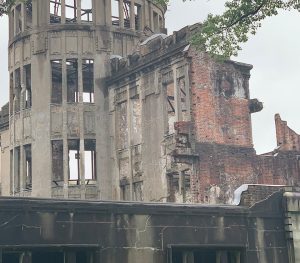
The peace park was an attraction to the G7 summit held in Hiroshima. The flowers and wreaths and words lined up from the cenotaph through the children’s memorial toward the dome at ground zero. Zelensky even said a few words and then the world went back to warring it out. Monuments can not whitewash history.
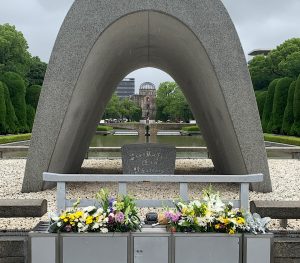
Yet the mark left for generations is far more painful. I watched hundreds (yes I said hundreds) of school children praying at the children’s monument in Peace Park.. These were not happy children These children were praying and singing and hoping their city, country and family could heal. The rain washed over their umbrellas like a memory.
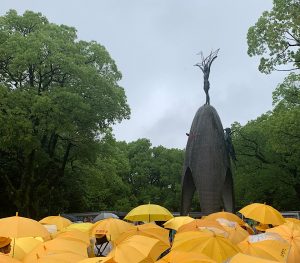
The story of the cranes captures the inter-generational suffering. Sadako was two years old when the Bomb obliterated Hiroshima. She survived cradled safely. Ten years later she was diagnosed with acute leukemia. She was treated at the hospital for survivors of the nucleur explosion. She believed a traditional legend that if you make a wish and fold 1000 paper cranes your wish will come true. Sadly at around 1400 cranes she dies at the age of 12. I watched the wave of yellow umbrellas move through the memorial museum and the empty tricycles, the outlines on monuments, the charred t-shirt each gave these children pause. The memorial is their story, the world is theirs to change if you help them.
